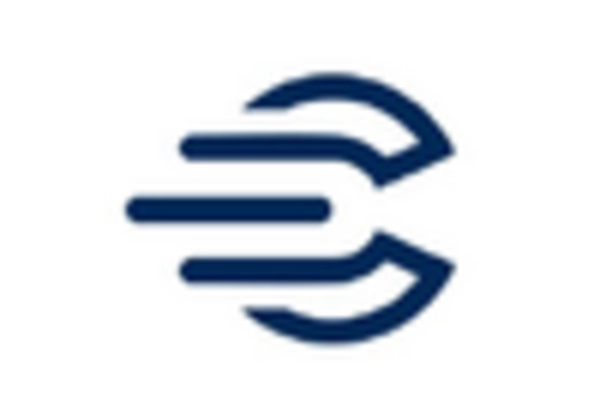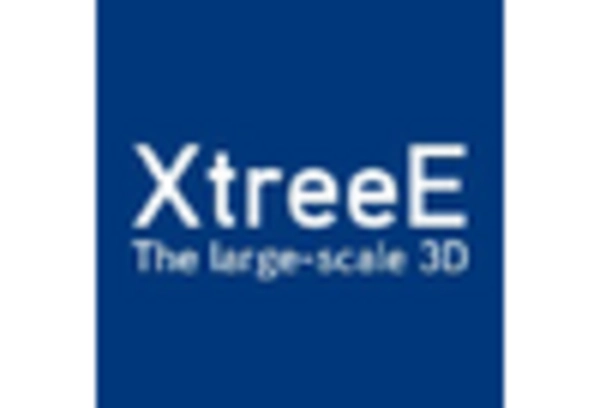Cost Efficiency in Construction
The 3d concrete-printing market is experiencing a notable shift towards cost efficiency in construction processes. Traditional building methods often incur high labor and material costs, whereas 3d concrete printing can significantly reduce these expenses. By utilizing automated processes, labor costs can decrease by up to 30%, while material waste is minimized, leading to savings of approximately 20%. This cost-effectiveness is particularly appealing to developers and contractors, as it allows for more competitive pricing in a challenging market. Furthermore, the ability to produce complex structures with less material enhances the economic viability of projects. As a result, the drive for cost efficiency is likely to propel the growth of the 3d concrete-printing market, making it an attractive option for various construction applications.
Customization and Design Flexibility
Customization is becoming a pivotal driver in the 3d concrete-printing market, as it allows for unprecedented design flexibility. Unlike traditional construction methods, which often limit architectural creativity, 3d printing enables the creation of intricate designs and unique structures tailored to specific client needs. This capability is particularly beneficial in residential and commercial projects, where aesthetic appeal is paramount. The market is witnessing an increase in demand for bespoke solutions, with studies indicating that over 40% of consumers prefer customized designs. This trend is likely to encourage architects and builders to adopt 3d concrete printing technologies, thereby expanding the market's reach. The ability to produce complex geometries without significant cost increases positions 3d concrete printing as a transformative force in the construction industry.
Environmental Regulations and Compliance
The 3d concrete-printing market is increasingly influenced by stringent environmental regulations aimed at reducing carbon footprints and promoting sustainable practices. As governments implement policies to curb emissions, construction companies are seeking innovative solutions that comply with these regulations. 3d concrete printing offers a potential pathway to meet these requirements, as it can utilize eco-friendly materials and reduce waste. For instance, the use of recycled aggregates in concrete mixtures can lower environmental impact while maintaining structural integrity. Furthermore, the market is projected to grow by 25% over the next five years, driven by the need for compliance with evolving environmental standards. This regulatory landscape is likely to encourage the adoption of 3d concrete printing technologies, positioning them as a viable alternative in the construction sector.
Rapid Prototyping and Construction Speed
The demand for rapid prototyping and construction speed is a significant driver in the 3d concrete-printing market. Traditional construction methods often involve lengthy timelines, which can delay project completion and increase costs. In contrast, 3d concrete printing can expedite the building process, with structures being completed in a fraction of the time. Reports indicate that construction timelines can be reduced by up to 50% when utilizing 3d printing technologies. This efficiency is particularly advantageous for urgent projects, such as emergency housing or infrastructure repairs. As the need for quick turnaround times becomes more pronounced, the 3d concrete-printing market is likely to see increased adoption, positioning it as a key player in the future of construction.
Labor Shortages in the Construction Sector
Labor shortages are a pressing issue in the construction sector, significantly impacting project timelines and costs. The 3d concrete-printing market presents a solution to this challenge by reducing reliance on skilled labor. Automated printing processes can operate with minimal human intervention, allowing projects to proceed even in the face of workforce shortages. This capability is particularly crucial as the construction industry faces a projected shortfall of 1 million workers by 2026. By leveraging 3d printing technology, companies can maintain productivity and meet project deadlines without compromising quality. Consequently, the ability to mitigate labor shortages is likely to drive the adoption of 3d concrete printing, making it an essential tool for the future of construction.















